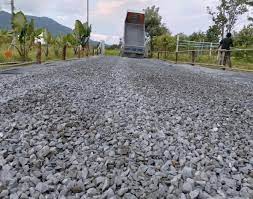Landfilling, while often seen negatively due to the environmental affects, remains a crucial facet of squander administration in lots of locations around the world. Accepting land filling (รับถมดิน) like a needed aspect of waste fingertips tactics requires acknowledging both its downsides along with its probable rewards in the wider framework of sustainable waste administration.
For starters, it’s vital to recognize the environment effects linked to landfilling. Landfills release green house toxic gases like methane, a powerful reason for global warming, as natural and organic squander decomposes anaerobically. Additionally, leachate from trash dumps can ruin dirt and normal water options otherwise properly managed. These ecological issues underscore the importance of reducing waste technology and increasing trying to recycle and composting attempts to minimize reliance upon trash dumps.
Even so, in spite of its negatives, landfilling works as a practical remedy for managing non-recyclable and non-compostable waste materials. Contemporary dump design and managing techniques aim to minimize enviromentally friendly impacts by implementing liners, leachate selection techniques, and fuel catch elements. Moreover, nicely-regulated landfills can offer a less hazardous plus more controlled fingertips option when compared with illegal dumping or inferior spend management practices.
Recognizing landfilling consists of being familiar with its function throughout the squander management hierarchy. Whilst lowering and trying to recycle waste materials should always be prioritized, specific supplies, such as harmful spend or remains from recycling operations, could require removal in landfills. Adopting landfilling within a diverse spend administration method acknowledges the necessity for numerous approaches personalized to different squander streams and local contexts.
Furthermore, trash dumps can provide options for source of information recuperation through tactics like dump exploration, where by valuable materials are taken from more mature dump websites for reuse or trying to recycle. Moreover, some landfills are repurposed as recreational areas, solar powered farms, or some other amenities when they achieve ability, showing the opportunity of environmentally friendly land use post-closing.
To conclude, agreeing to landfilling requires knowing its position as a essential but imperfect element of squander management. Whilst initiatives must be made to decrease reliance on trash dumps through spend reduction and diversion methods, they keep a realistic solution for dealing with some types of waste materials. By employing successful polices, investing in technological innovation, and investigating possibilities for source rehabilitation, landfills can be integrated into a wider framework of lasting waste managing procedures.
